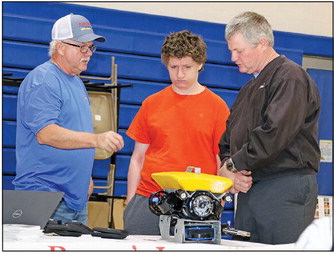Don’t look the other way when it comes to the fate of the missing


Keith Cormican (left) explains about the equipment he uses as part of Bruce’s Legacy, when searching for sumberged bodies in water. Photo by Ginna Young


Keith Cormican (left) explains about the equipment he uses as part of Bruce’s Legacy, when searching for sumberged bodies in water. Photo by Ginna Young